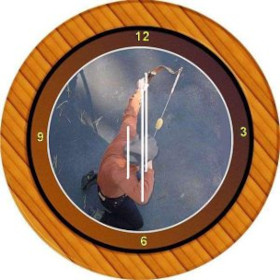To me it's a lot easier and I get better results if I control the twist and backset while drying than if I have to remove the twists and lateral bends later. Once dry you can induce reflex, recurves or slightly reflexed tips or remove twists with dry heat. I've started tempering the belly of all my bows as the last thing I do on the caul.Some say osage isn't a good candidate for belly tempering but I think it helps and it definitely doesn't hurt...but be sure the tempering is only on the belly and doesn't overlap to the back.
Also, be sure the back is sealed well, even after the stave is dry. I've has 10 year old staves check when heat was introduced for straightening, bending or tempering. Shellac is what I use. I keep a spray can on my workbench all the time.
Spray shellac is a bit more expensive than other types but for as little as you use for an application in normal bow building it is very convenient to just do a quick spray when needed. Shellac can be easily removed when needed with a light sanding or a wipe of alcohol but it can be left on and most finishes can be added over it. If you want to dye or stain the wood you will have to remove the shellac.














